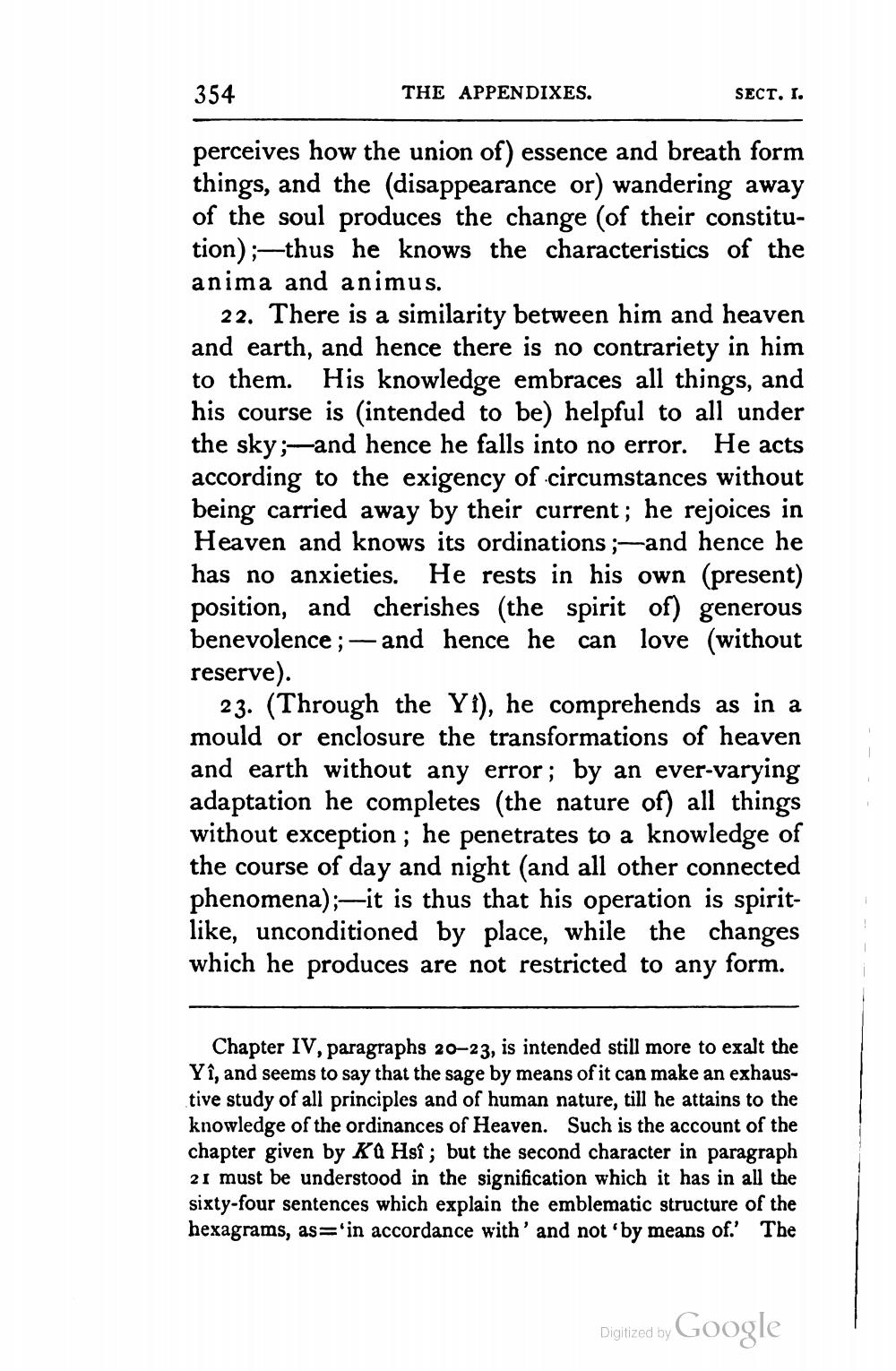________________
354
THE APPENDIXES.
SECT. I.
perceives how the union of) essence and breath form things, and the (disappearance or) wandering away of the soul produces the change (of their constitution) ;-thus he knows the characteristics of the anima and animus.
22. There is a similarity between him and heaven and earth, and hence there is no contrariety in him to them. His knowledge embraces all things, and his course is intended to be) helpful to all under the sky;--and hence he falls into no error. He acts according to the exigency of circumstances without being carried away by their current; he rejoices in Heaven and knows its ordinations ;-and hence he has no anxieties. He rests in his own (present) position, and cherishes (the spirit of) generous benevolence; - and hence he can love (without reserve).
23. (Through the Yt), he comprehends as in a mould or enclosure the transformations of heaven and earth without any error; by an ever-varying adaptation he completes (the nature of) all things without exception; he penetrates to a knowledge of the course of day and night (and all other connected phenomena);—it is thus that his operation is spiritlike, unconditioned by place, while the changes which he produces are not restricted to any form.
Chapter IV, paragraphs 20–23, is intended still more to exalt the Yî, and seems to say that the sage by means of it can make an exhaustive study of all principles and of human nature, till he attains to the knowledge of the ordinances of Heaven. Such is the account of the chapter given by Ku Hsi; but the second character in paragraph 21 must be understood in the signification which it has in all the sixty-four sentences which explain the emblematic structure of the hexagrams, as='in accordance with' and not by means of. The
Digitized by Google




